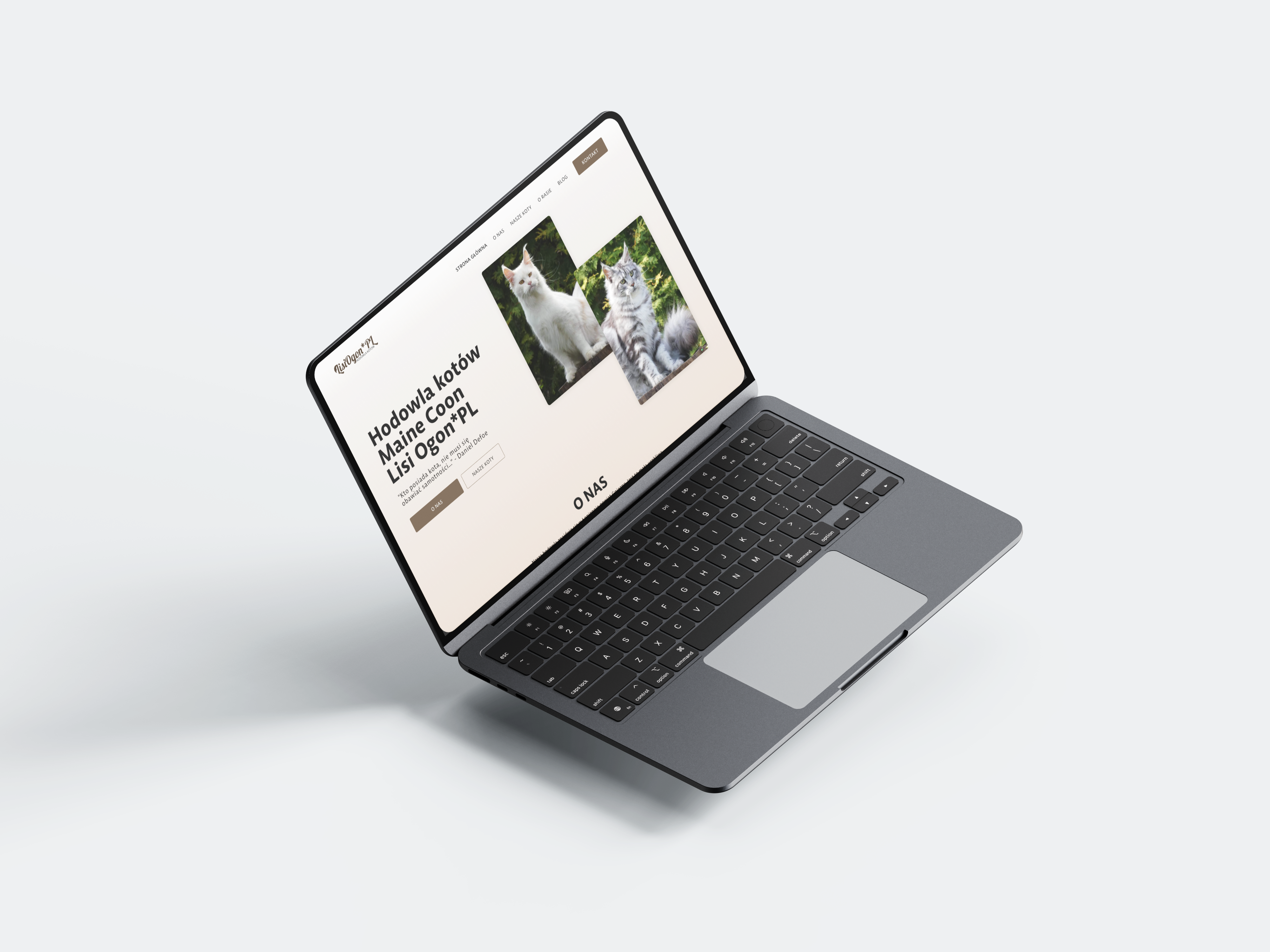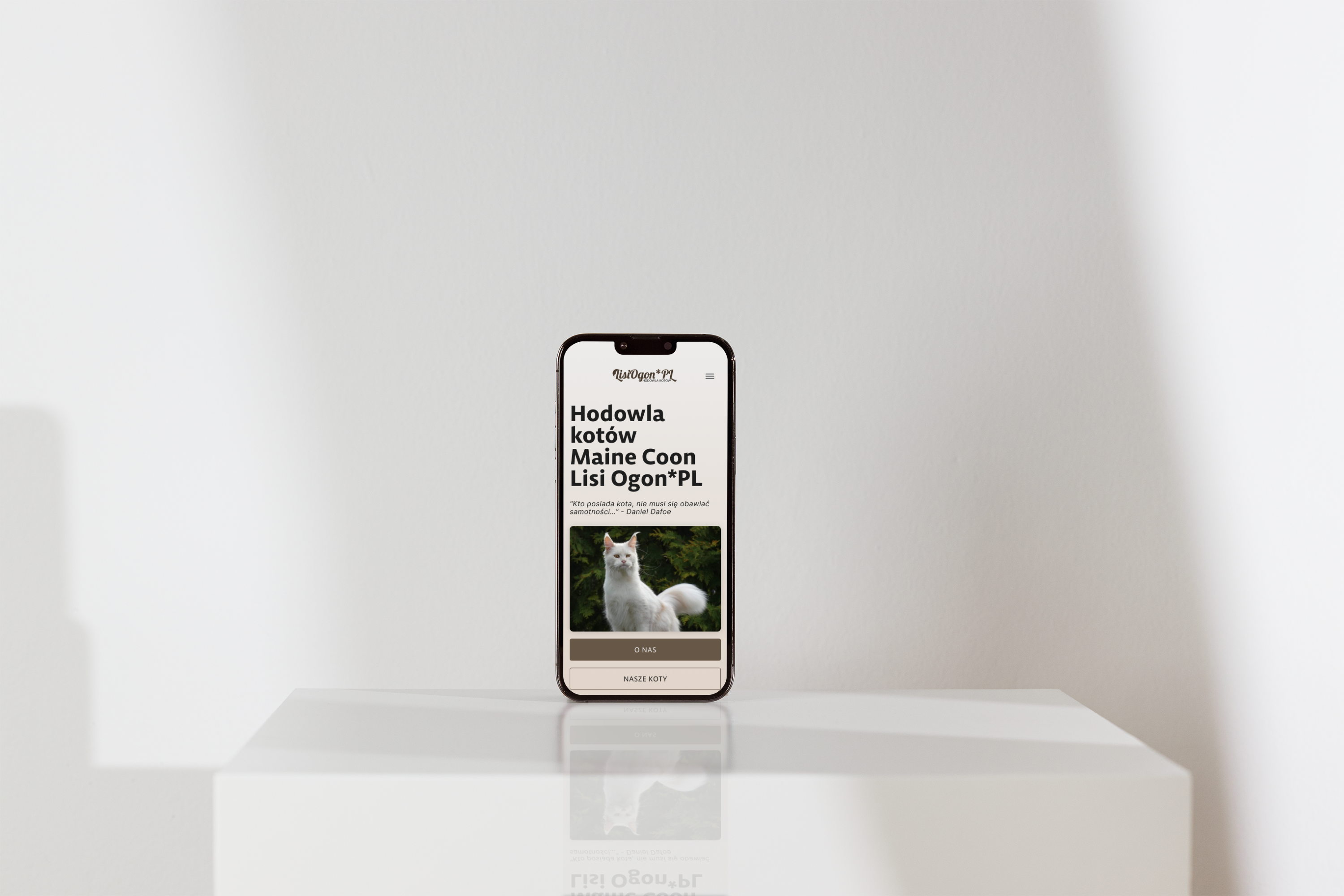
The LisiOgon*PL project was part of a Publishing School diploma project.
The goal was to design a website for a cattery that lacked an official online presence, relying only on social media. The project followed Design Thinking methodology to address both business and user needs.
The goal was to design a user-friendly, informative, and visually appealing website to increase accessibility, showcase the cattery’s offerings, and streamline communication with potential customers.
The cattery did not have an official website, limiting potential clients’ ability to access important information easily,
and relying only on social media or calling for communication.
I led the design process, from research and ideation to prototyping and final designs. I created user personas, conducted usability tests, and developed wireframes and high-fidelity designs, ensuring the website met both user needs and business goals.
Miro, Figma, Adobe Photoshop, Adobe Illustrator, ChatGPT, Google Forms
March – June 2023
Tap any of the process steps and magic wand 🪄 will take you there!
Conducted surveys and interviews to understand user needs, frustrations, and behaviors.
Lack of an official website for the cattery, which hindered potential customers from easily accessing information.
Brainstormed solutions, created user journey maps, and developed wireframes. Explored different design ideas through sketching and low-fidelity prototypes.
Developed high-fidelity designs, including UI components, color schemes, and layouts using Figma. Tested early versions of the website with users for feedback.
Refined the prototype based on user feedback, tested again, and made final adjustments to improve usability and ensure the design met user needs.
Refined the prototype based on user feedback, tested again, and made final adjustments to improve usability and ensure the design met user needs.


Two personas were created based on the client brief


The cattery lacks a website, relying solely on social media, which is inconvenient for potential customers seeking quick, reliable information about the cattery and its operations.
As a research method, I chose a survey in which 66 people participated. I got a huge dose of knowledge, which allowed me to get more insight into the needs and problems of potential customers.
of respondents look for information on official websites.
believe the cattery should have a website.
also look for information on social media and Facebook groups.
of respondents had no prior experience with breeders.




Time for brainstorm & design!
I created a lo-fi prototype and gave it to the client for testing. Also it was tested by 4 friends – no major objections, information was easy to find and tasks were performed correctly.




After the lo-fi prototype was successfully tested and approved by the client, I could get down to, as for me, the most interesting part of the whole process – creating the design!
I started by choosing a color scheme and typography. Grid system I used for the project was 8 pixels.


I began the design process by creating the logo in Adobe Illustrator, opting for the Lobster font due to its unique letter endings, which I creatively modified to resemble a fox tail. This added a playful, thematic element to the brand identity.

I developed a UI component set to ensure consistency throughout the design. This set included essential elements like buttons, icons, and navigation bars. I carefully organized and named all design files based on their function, making them easily transferable and understandable for the developer, streamlining the handoff process.



Working on the LisiOgon*PL project taught me that effective design is an iterative and thoughtful process. Through research, prototyping, and testing, I learned that user feedback and continuous refinement are critical to creating a product that meets both business and user needs.
The most valuable takeaway was understanding the importance of aligning the design with user expectations while ensuring a seamless handoff to developers. Moving forward, I would focus even more on conducting in-depth user interviews to enhance the overall experience.
If the customer approves the project:
After spending countless hours on this project, I’ve realized that the design process is neither quick nor easy, and rushing it never leads to good outcomes. It’s a continuous brainstorming effort, where ideas evolve constantly throughout the project. Iterating solutions and thoroughly justifying each decision is essential to achieving a successful outcome. This is the foundation of effective UX Design, where understanding and refining solutions ensures that they truly meet user needs.
If I had more resources and a larger budget, I would definitely conduct more in-depth interviews with potential clients. This would allow me to gain a deeper understanding of their real needs, motivations, and challenges. I aim for the project to go beyond theoretical assumptions, enabling direct interaction with people, which would enrich the design process. It would help create a solution that is even more tailored to users’ expectations and genuinely addresses their concerns.
Whether you have a project in mind or just want to say hello, I’m here to help.
Let’s collaborate and create something amazing together!
designariusz – Dariusz PArtyk
Ampèrestraat 70,
2563 ZV Den Haag
kvk: 95036113